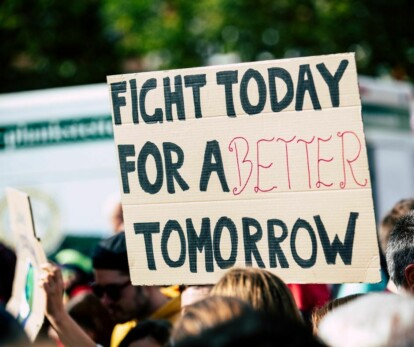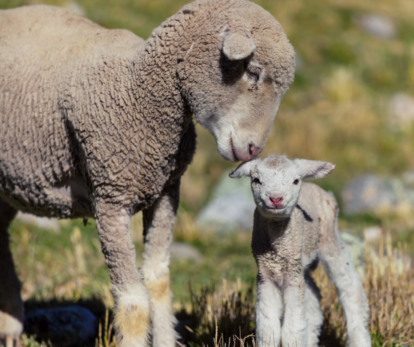Veganism in 2025: Key Events, Campaigns, and Trends


Humans have interacted with other animal species on this planet for as long as we have existed. Sadly, many of these interactions have been about using our animal kin for food, clothing, transportation, and labour.
The modern animal rights movement, as most people know it (although we prefer the term “animal freedom”), emerged in the mid-20th century in response to growing awareness of the animal suffering and impact of human activities on other species and the environment.
Today, it’s one of the fastest-growing social justice movements on the planet.
But what is the history of the animal rights movement? How did it begin to gain momentum? Who paved the way for activists today?
The timeline of the animal rights movement may go back further than you realise! In today’s blog, we’re taking a look at key milestones up until the mid-20th century, when the movement really began to gain momentum.
8th Century BCE: The earliest known reference to the idea of non-violence to animals (pashu-ahimsa) in a moral sense was found in the Kapisthala Katha Samhita of the Yajurveda in India, written about the eighth century BCE.
1635: An Act against “plowing by the tayle, and pulling the wooll off living sheep” was passed by the Parliament of Ireland and was one of the first known pieces of legislation to protect the rights of animals.
The act sought to end the practice of tying a plough to a horse’s tail, which was cheaper than fitting a harness, and of plucking wool from living sheep. It also tried to prevent people from forcing cows to give milk.
1641: The Massachusetts Body of Liberties legal code established by a Puritan called Nathaniel Ward was one of the earliest protections of individual rights in America. Passage 92 contained regulations saying that “No man shall exercise any Tirranny or Crueltie towards any bruite Creature which are usuallie kept for man’s use”.
1687: The Tokugawa shogunate (Japan’s military government) reintroduced a ban on killing animals or eating their flesh (Emperor Tenmu had implemented an earlier ban in 675). This reflected the Buddhist ethos of non-violence towards all living things.
Sadly, Emperor Meiji repealed the ban in 1872.
1780: Jeremy Bentham was the first Western philosopher to argue that other animals deserve equal consideration of their interests within a non-religious moral framework. Although some people cite Bentham as the forebear of the animal rights movement, he approved of using or killing animals if needless cruelty could be avoided. As such, his concerns were more around welfare than freedom.
Still, the equal consideration of interests continues to be a core principle to the animal rights movement today.
1806: The earliest concepts of veganism began to emerge with people such as Dr William Lambe and Percy Bysshe Shelley publicly objecting to eating eggs and dairy on ethical grounds.
1822: The UK Parliament passed the “Cruel Treatment of Cattle Act 1822” to protect “ox, cow, heifer, steer, sheep, or other cattle” from cruelty or improper treatment. This law is sometimes referred to as “Martin’s Law” as it was the work of Colonel Richard Martin, a passionate and highly active campaigner against cruelty to animals.
1824: Two years later, Richard Martin joined with Reverend Arthur Broome, William Wilberforce (a philanthropist and one of the leaders of the anti-slave trade movement), and others to found the world’s first animal welfare organisation, the Society for the Prevention of Cruelty to Animals (SPCA).
The society reflected the growing concerns of the time among social reformers, clergy and others about the suffering other animals experienced at human hands. In its first year of operation, the SPCA brought 63 offenders before the courts for animal cruelty.
Royal patronage followed in 1837 and Queen Victoria gave permission for the society to use the Royal R in 1840, which is when it became the RSPCA.
1835: The Cruelty to Animals Act of 1835 amended the 1822 legislation to cover a wider range of issues. For example, it prohibited people from keeping premises with the purpose of staging “the baiting of bulls, dogs, bears, badgers or other animals (whether of domestic or wild Nature or Kind)”.
The law was introduced by Joseph Pease, who was a member of the SPCA committee.
1849: The Cruelty to Animals Act 1849 replaced the 1822 and 1835 legislation and attempted to add further layers of protection to our animal kin. People could face a fine for beating, ill-treating, “over-driving”, abusing or torturing animals, and go to prison for the unlawful killing of any animals covered within the law.
1866: Philanthropist and diplomat Henry Bergh founded the American Society for the Prevention of Cruelty to Animals (ASPCA). He had become concerned about the plight of other animals during a visit to Russia after witnessing merciless beatings of workhorses. After visiting the RSPCA in June 1865, he committed to creating a similar organisation in America, one with the power and authority to arrest. Bergh described protecting our animal kin as “a matter of purely conscience”.
Bergh was a hands-on campaigner throughout his life, bringing the topic of animal rights into education and collaborating closely with police to shut down activities such as dog fighting. By the time he died in 1888, 37 of the 38 states in the Union had adopted some form of anti-cruelty laws.
1868: Philanthropist George Thorndike Angell founded and became the President of the Massachusetts Society for the Prevention of Cruelty to Animals.
1875: Humanitarian Frances Power Cobbe founded the National Anti-Vivisection Society (NAVS) with the goal of ending animal testing and using alternative advanced scientific research methods. Many notable people of the day supported NAVS.
1876: The UK Parliament passed the Cruelty to Animals Act, amending the Act of 1849. It was the first piece of legislation to regulate animal experimentation. Many felt the aim of the Act was to placate critics of vivisection, and it was heavily criticised by NAVS for providing no public accountability for licensing decisions.
1882: George Angell creates the “Bands of Mercy”, local groups working with people – mainly children and adolescents – to teach them about being kind towards and protecting their animal kin. Angell believed it possible to prevent cruelty through humane education and direct action. By 1900, approximately three per cent of all American children were active members in local Bands of Mercy.
1892: Humanitarian reformer Henry S Salt published a book called Animal Rights, Considered in Relation to Social Progress. The book, which many still refer to today, explores how the ways and means of suffering imposed on other animals is a consequence of denying their rights and disregarding the natural kinship between humans and other animals.
1900: The UK Parliament passed the Wild Animals in Captivity Protection Act, which made it illegal to “cruelly abuse, infuriate, tease, or terrify” any animal in captivity or to allow someone else to do so. People found guilty under this Act could face a prison sentence – with or without hard labour – of up to three months.
1911: Many see the Protection of Animals Act 1911 (passed by the UK Parliament) as the most significant forebear of modern animal welfare legislation. This Act determined that failing to seek veterinary help for a sick or injured animal or administering their own alternative treatment without seeking veterinary advice could cause unnecessary suffering.
1944: Donald Watson and five other “non-dairy vegetarians” settled on the word “vegan” to describe a diet free from products derived from other animals.
1949: Leslie J Cross suggested defining veganism as “[t]he principle of the emancipation of animals from exploitation by man”. A later clarification was that veganism “seeks an end to the use of animals by man for food, commodities, work, hunting, vivisection, and by all other uses involving exploitation of animal life by man”.
Keep an eye out for part two of this blog when we’ll be looking at the animal rights movement timeline from the mid-20th century to today!